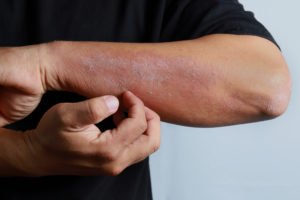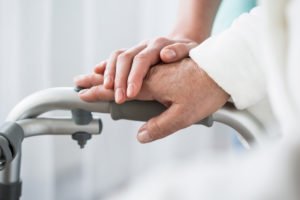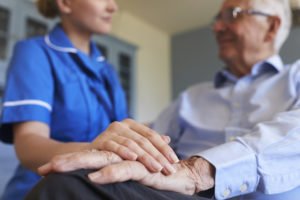
According to the U.S. National Library of Medicine, many types of germs cause skin infections in nursing home residents and the general public. Exposure to bacteria, viruses, fungi, and parasites can all cause skin infections. For the most part, human immune systems can fight off these germs without any severe consequences.
If you notice that your loved one has contracted a skin infection that seems out of control, it would understandably raise some internal red flags. Ultimately, families make the difficult decision to help their loved ones move into nursing homes when family members can no longer tend to all their medical needs adequately.
The care of older people like nursing home residents requires round-the-clock efforts to keep them physically, emotionally, and socially stable. This attention includes routine hygiene care, as well as more complicated medical efforts to treat skin infections.
About Skin Infections in Nursing Home Residents
Skin infections happen more often to older people with compromised immune systems, like some nursing home residents. Residents with chronic conditions like diabetes, lung cancer, or kidney disease, and bedridden patients are all at higher risk of contracting skin infections and related complications. The symptoms or indicators of skin infections include:
- Rashes
- Pain and swelling
- Oozing pus
- Itching
While the causes of skin infections vary with each case, the common symptoms of each type of skin infection can overlap. When a nursing home resident’s immune system has a severe reaction to infection, a healthcare provider might diagnose them with sepsis, which the Centers for Disease Control and Prevention (CDC) explains can become life-threatening if not treated immediately.
Beyond the usual signs of infection mentioned above, complications like sepsis will present themselves with symptoms that require urgent medical attention. In some cases, people who suffer from sepsis could die. The signs of sepsis include:
- Difficulty breathing
- Disorientation or brain fog
- Elevated heart rate and high blood pressure
- High fever or chills
- Clammy skin
- Complaints of unusual pain and discomfort
Sepsis is a common complication of infections and not just limited to skin infections. If your loved one’s health condition gets to the point where they become septic, they become at high risk of death. According to the Mayo Clinic, early treatment with antibiotics and intravenous fluids gives your loved one the best chances of survival.
For a free legal consultation, call 800-712-9119
Types of Skin Infections
The way your loved one’s medical professional will treat their skin infections will depend on the cause. Because the causes of skin infections can vary, one treatment may not be a cure-all for all types.
Bacterial Skin Infections
Skin comes in contact with bacteria all the time. However, hair follicles, existing scrapes or punctures, insect bites, wounds, or sunburns can become infected. The bacteria that cause skin infections may come from soil or water in a contaminated pool, lake, or ocean.
The extent of bacterial infections will depend on the type of bacteria and the entry site. Some common infection types in nursing homes include staphylococcus, especially the MRSA strain, which the Merck Manual wrote: “caused more than half of all community-associated skin and soft tissue infections treated in the United States.”
Fungal Skin Infections
Fungi is another life form commonly found throughout the world. A fungus is prone to grow in areas of the body where growing conditions are just right:
- Between the toes
- In the genital area
- Under the breasts
Fungal infections happen when fungi grow out of control, and they can spread to other areas of the body. You also can contract a fungal infection from skin-to-skin contact or touching infected surfaces. You can treat fungal infections with proactive use of anti-fungal agents like soaps, ointments, and other prescription solutions.
Viral Skin Infections
Common viruses for nursing home residents that cause skin infections include shingles, chickenpox, warts, measles, and hand, foot, and mouth disease. It is important to remember that individuals who carry any of the previously mentioned viruses will not necessarily show symptoms. People contract viruses from direct contact with skin or surfaces where the virus lives. Skin infections caused by viruses can range in severity, from showing no symptoms to terrible blisters and painful rashes.
Parasitic Skin Infections
Lice and scabies are two examples of parasitic skin infections when small insects or worms burrow into the skin, living there and laying eggs. Severe itching is the primary symptom of parasitic skin infections. Treatment options include prescription creams, ointments, and shampoos.
Understanding what causes skin infections in nursing home residents might not resolve the underlying issue. Skin infections could indicate poor hygienic conditions at the facility, a sign of possible nursing home abuse and neglect.
Addressing Concerns About Quality Nursing Home Care
When a nursing home resident frequently suffers from skin infections, or their repeated rashes, scratches, or lacerations do not receive proper medical treatment, it could reveal that the staff has neglected your loved one’s health or personal hygiene, with consequences that could become fatal. You can work with a nursing home abuse lawyer to understand and pursue options for defending your loved one’s legal rights and pursuing compensation for their injuries. Call Ben Crump Law, PLLC, today at 800-959-1444 for a free case review with a team member.
Call or text 800-712-9119 or complete a Free Case Evaluation form








